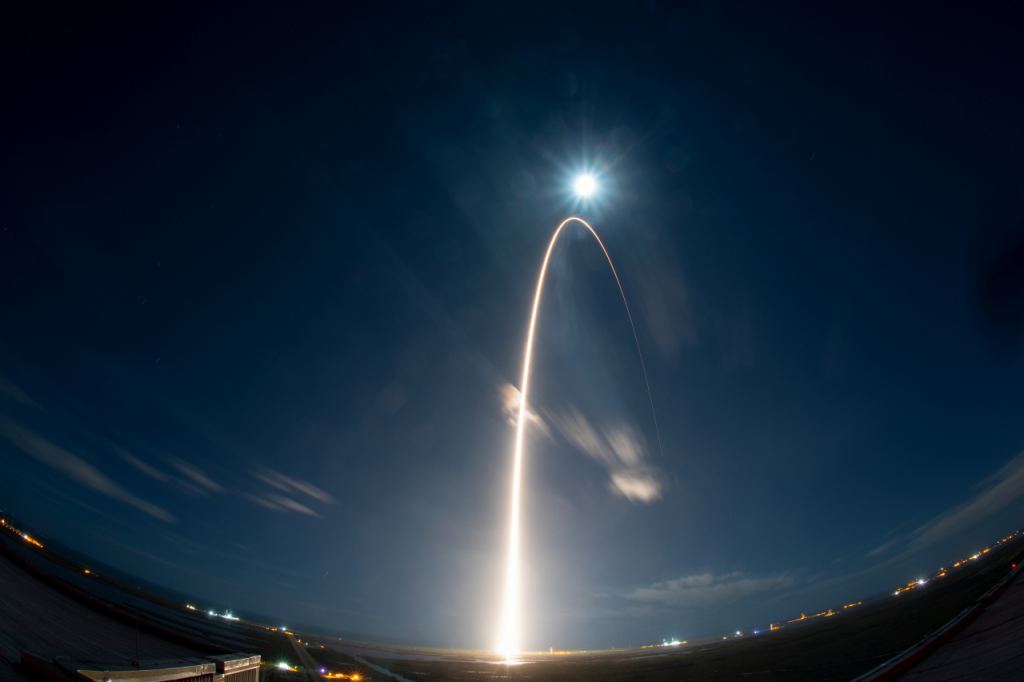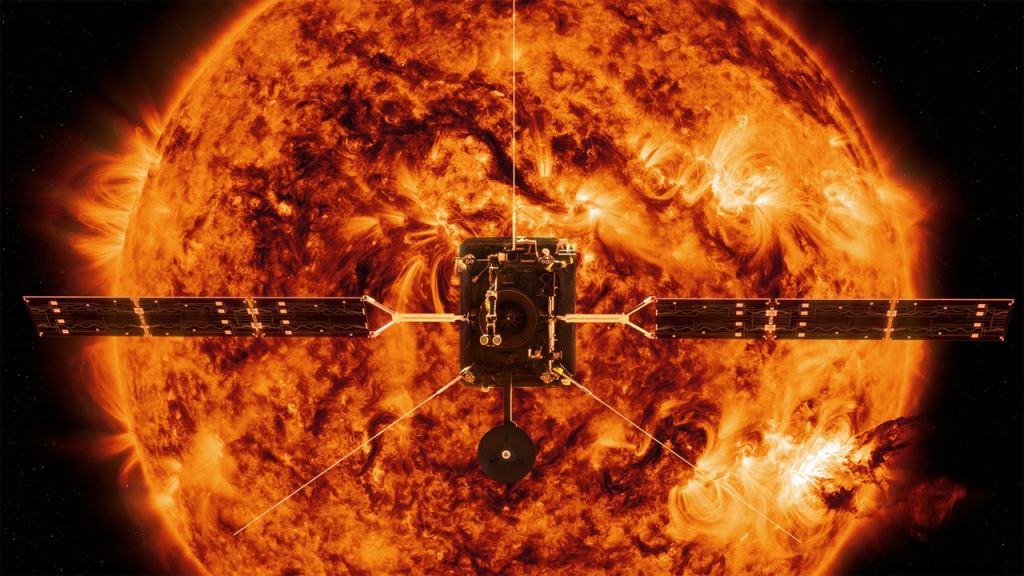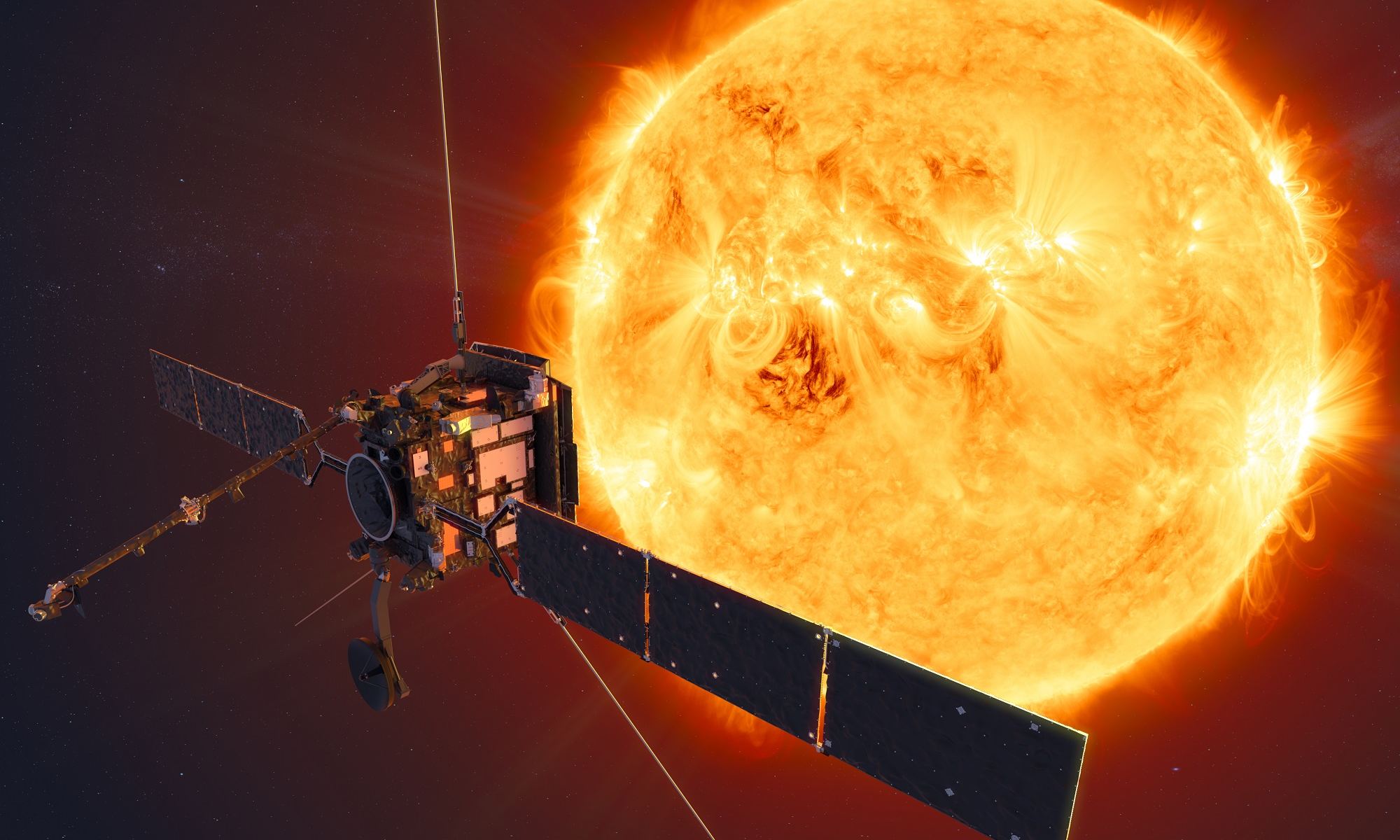In the coming years, a number of will be sent to space for the purpose of answering some of the enduring questions about the cosmos. One of the most pressing is the effect that solar activity and “space weather” events have on planet Earth. By being able to better-predict these, scientists will be able to create better early-warning systems that could prevent damage to Earth’s electrical infrastructure.
This is the purpose of the Solar Orbiter (SolO), an ESA-led mission with strong participation by NASA that launched this morning (Monday, Feb. 10th) from Cape Canaveral, Florida. This is the first “medium-class” mission implemented as part of the ESA’s Cosmic Vision 2015-25 program and will spend the next five years investigating the Sun’s uncharted polar regions to learn more about how the Sun works.
Here on Earth, events like solar flares have the potential to play serious havoc with electrical infrastructure, which includes knocking out power grids, disrupting air traffic and telecommunications, and endangering astronauts and the International Space Station (ISS). At present, governments and space agencies are able to anticipate such events only 48 minutes or so in advance.
Hence the need for solar missions, so scientists can predict solar weather events much earlier. When SolO arrives around the Sun, its mission will be to perform close observations of the polar regions of the Sun, the inner heliosphere, and the energetic particles that are blasted out and carried by solar wind throughout the Solar System. As Günther Hasinger, the ESA Director of Science, explained in a recent ESA press release:
“As humans, we have always been familiar with the importance of the Sun to life on Earth, observing it and investigating how it works in detail, but we have also long known it has the potential to disrupt everyday life should we be in the firing line of a powerful solar storm. By the end of our Solar Orbiter mission, we will know more about the hidden force responsible for the Sun’s changing behavior and its influence on our home planet than ever before.”
During the next two years, the SolO will perform gravity assist flybys with Earth and Venus that will put it in a highly elliptical orbit around the Sun. The latter flyby will slingshot the orbiter out of the ecliptic plane of the Solar System (which is where the planets orbit) and raise the spacecraft’s inclination to provide new views of the uncharted polar regions of the Sun.
During its five-year mission, the SolO will orbit the Sun with an inclination of 17° above and below the solar equator, and then adjust to an inclination of 33° during its extended mission. These orbits will allow the spacecraft to glimpse at what is happening around the northern and southern polar regions and take images of the surface using a suite of 10 in-situ and remote-sensing instruments.
This includes the Heliospheric Imager (SoloHi), Spectral Imaging of the Coronal Environment (SPICE), and the Polarithmic and Helioseismic Imager (PHI), which will image the Sun’s surface and corona. Meanwhile, instruments like the Energetic Particle Detector (EPD), Solar Wind plasma Analyser (SWA), X-ray Spectrometer/Telescope (STIX), and Extreme Ultraviolet Imager (EUI) will measure solar wind and the Sun’s magnetic field.
As Daniel Müller, the ESA’s Solar Orbiter project scientist, said of the SolO’s instrument package:
“The combination of remote-sensing instruments, which look at the Sun, and in situ measurements, which feel its power, will allow us to join the dots between what we see at the Sun and what we experience while soaking up the solar wind. This will provide unprecedented insight into how our parent star works in terms of its 11-year solar activity cycle, and how the Sun creates and controls the magnetic bubble – the heliosphere – in which our planet resides.”
This mission is the result of twenty years of planning, six years of construction and development, and a year of testing, all of which was necessary to validate the high-temperature technology involved. The SolO mission was also the result of inter-agency cooperation between the ESA and NASA, as well as between the ESA and industry partners like Airbus Defense and Space Ltd.

During its mission, SolO will study the Sun from a distance of about 42 million km (26 million mi) from the surface – which will place it within the orbit of Mercury. At this distance, the orbiter will experience temperatures of up to 500 °C (932 °F) – about thirteen times what satellites experience in orbit around Earth. This presents considerable challenges, as Sylvain Lodiot – ESA’s Solar Orbiter spacecraft operations manager – explained:
“Operating a spacecraft in close proximity of the Sun is an enormous challenge… Our team will have to ensure the continuous and accurate pointing of the heatshield to avoid the potential damage from the Sun’s radiation and thermal flux. At the same time, we will have to ensure a rapid and flexible response to the requests of the scientists to adapt their instruments’ operations according to the most recent observations of the Sun surface.”
The Solar Orbiter will be joining NASA’s Parker Solar Probe (PSP), which launched in August of 2018 and has also been studying the Sun in close proximity. While their objectives are complementary, the two missions differ in some key respects. Put simply, the Parker Solar Probe will study the Sun from a much closer distance (effectively “touching” the Sun) to study how solar wind originates.
By flying at a greater distance, the SolO mission will be able to conduct direct observations of the Sun and achieve a comprehensive perspective. As already noted, this will include views of the Sun’s polar regions for the first time in history. This information will also provide context to the measurements conducted by the PSP, producing complementary data sets that add up to more than the two missions could provide on their own.

“Solar Orbiter is the newest addition to the NASA Heliophysics System Observatory, joining Parker Solar Probe in an extraordinary adventure to unlock the biggest mysteries of the Sun and its extended atmosphere,” said Holly Gilbert, the mission’s Project Scientist. “The powerful combination of these two missions and their awe-inspiring technology advancements will thrust our understanding to new heights.”
This mission will build on the legacy of missions like the Ulysses spacecraft and the Solar and Heliophysics Observatory (SOHO), both of which are joint NASA-ESA missions. These and other missions, a combination of spacecraft and ground-based telescopes, will provide us with the most advanced look at our Sun to date and unlock the mysteries about its influence on Earth.
Further Reading: ESA

